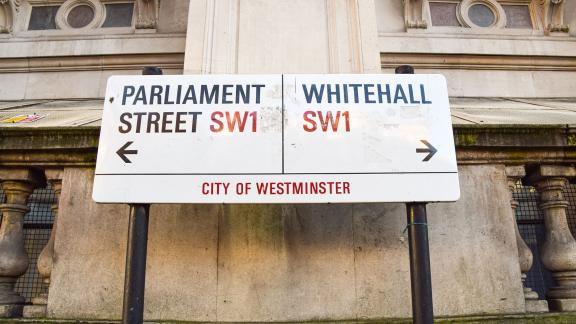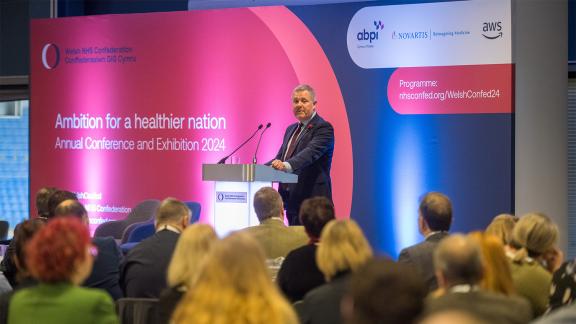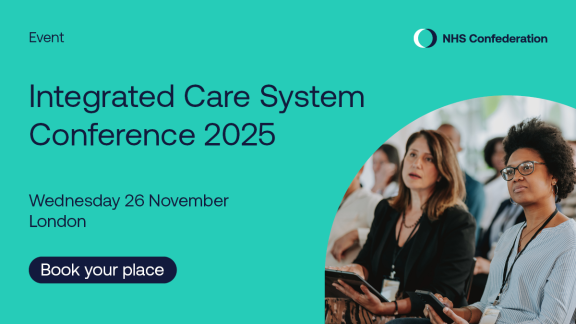Autumn Statement 2022: what you need to know
Key points
- Health revenue spending will increase by £3.3 billion in cash terms over the next two years. Capital spending will increase slightly from what was planned last October and the New Hospital Programme will continue as planned.
- Social care spending will increase by £2.8 billion next year and £4.7 billion the year after. This will be paid for through delaying the social care reform announced last year and increasing direct central government funding by £1 billion next year and £1.7 billion the year after, as well as through increased council tax. The extra funding includes £1 billion to directly support discharges from hospital into the community, to support the NHS in 2024/25.
- In return for the extra funding, the government is expecting the NHS to make further efficiencies, as well as delivering improved performance on ambulance response times, A&E waiting times and in improved access to primary care. At this stage, the specific targets are unclear, beyond the commitment for everyone who needs an appointment with their GP practice to get one within two weeks, and those who need an urgent appointment to get one on the same day.
- In an important development, the Chancellor said the Department of Health and Social Care (DHSC) will next year deliver an independent assessment of workforce needs in five, ten and 15 years. The NHS Confederation and others have been making the case for this for several years and it is a welcome development.
- Patricia Hewitt, chair of NHS Norfolk and Waveney integrated care board, will lead a review into the role and powers of integrated care boards, with a view to how local systems can be granted more autonomy with the right level of accountability in return.
- The energy price cap for businesses and public services will remain in place until April.

Background
Political background
Today, the Chancellor of the Exchequer Rt Hon Jeremy Hunt MP brought his Autumn Statement before the House of Commons.
This year has been awash with challenges, fuelled by Russia’s invasion of Ukraine, the aftermath of the pandemic and of course, a growing cost-of-living crisis. These factors, particularly the latter, have made this Autumn Statement all the more highly anticipated.
Facing a £50 billion hole in the public finances, the government targeted tax rises and cuts in public spending to help balance the books. With the NHS already facing a circa £6-7 billion funding gap for 2023/24, according to NHS England, there have been concerns that further cuts would exacerbate the challenges facing the NHS. In particular, backlogs in care – made worse by the pandemic – are affecting the lives of many of those who await treatment, and in turn impacting the economy by impeding productivity. Staff are stretched but incentives for recruitment and retention are lacking.
Heading into the Autumn Statement, we were clear that NHS leaders needed to see urgent funding to address critical issues around workforce, capital and social care. We briefed MPs on these priorities ahead of today’s announcement.
Much of the NHS Confederation’s focus in the weeks leading up to the Autumn Statement has been to challenge the narrative that the NHS is a drain on the public finances. As our independent research shows, for every £1 spent per head on the NHS, there is a corresponding return on investment of £4, showing an economic benefit to investing in our national health service.
We have therefore been making the case to the government that all investment in the health service is investment in our communities, and that without it they will struggle to drive economic growth.
Funding background
Last year’s Spending Review set out an annual 3.8 per cent increase in NHS England’s funding until 2024/25. At the time we welcomed the rise, but the NHS Confederation has consistently pointed out that this followed a decade of so-called ‘ring fenced’ funding rises for the NHS of around 1 per cent a year.
This was far below the historical average of 4 per cent between 1948 and 2009. This overall 1 per cent annual rise also hid terrible inequities across health and care. Capital spending was consistently half that of our OECD peers throughout the 2010s. And according to recent analysis from the Health Foundation, the public health grant has been cut by 24 per cent on a real-terms per person basis since 2015/16. All this happened while the population aged, and care became more complex.
Since October 2021’s Spending Review, inflation has spiralled to levels not seen in decades. Our analysis showed that, on the eve of the fiscal statement, the NHS revenue budget was set to be up to £17 billion less in real terms by 2024/25 than was originally forecast in October 2021. Moreover, the public finances have worsened significantly since the Spring Statement in March – the so-called ‘black hole’ - with rising interest rates and the continued energy supply crisis worsening the country’s economic outlook.
Summary of the Autumn Statement
Overall fiscal plans
- The Chancellor has announced a large series of tax rises and spending cuts totalling £55 billion. The Chancellor also loosened the government’s self-imposed fiscal rules. The new rules are to borrow no more than 3 per cent of GDP five years out and have debt falling as a percentage of GDP.
- Most tax increases are backloaded until after 2025. However, National Insurance employer allowance will be frozen for six years, which is likely to affect the NHS. And the top 45 per cent rate of tax will kick in from £125,140 rather than £150,000, affecting some senior NHS employees.
- For the remaining two years of the Spending Review period, overall departmental spending will be the same amount in cash terms. Resource spending is anticipated to grow at 1 per cent per year in real terms in the following three years.
- The Office for Budget Responsibility forecasts consumer price index inflation at 9.1 percent for 2022, and then year-on-year increases of 7.4 per cent in 2023 and 0.6 per cent in 2024. The GDP deflator meanwhile, usually a more accurate reflection of cost pressures on public services, is at 4.4 per cent for 2022, with forecasted rises of 3.5 per cent in 2023 and a further 1.7 per cent in 2024.
Health announcements
- Health spending will increase by £3.3 billion in cash terms in the next two years. Combined social care and NHS spend will increase by £8.1 billion in cash terms by 2024/25.
- Social care funding will increase by £2.8 billion next year and £4.7 billion the year after. This will be paid for through delaying the social care reform announced last year and increasing direct central government funding by £1 billion next year and £1.7 billion the year after, as well as through increased council tax. This includes £1 billion to directly support discharges from hospital into the community, to support the NHS.
- The Chancellor announced the DHSC will publish an independent assessment of NHS workforce needs. This is a major development following several years of campaigning by the NHS Confederation and other organisations.
- The overall capital budget will increase slightly. However, it isn’t clear from what’s provided today how this is accounted for. The New Hospital Programme will remain funded, although no extra detail was announced on how this will be paid for.
- The NHS will continue to deliver the Elective Recovery plan published in February.
- Chair of NHS Norfolk and Waveney, Patricia Hewitt, a former Secretary of State for Health, will lead a review into the role and powers of integrated care systems, looking at how they can be handed more autonomy with the right level of accountability in return.
- The NHS will publish full recovery plans for the urgent and emergency care and primary care systems including interim milestones in the new year.
- These plans will set out detailed ambitions for recovery to deliver:
- improved ambulance response times for Category 2 incidents to 30 minutes on average over 2023-24, with further improvement towards pre-pandemic levels in 2024-25
- year-on-year improvements in A&E waiting times over 2023-24 and 2024-25
- improved access to general practice, so that everyone who needs an appointment with their GP practice can get one within two weeks, and those who need an urgent appointment can get one on the same day.
Other relevant announcements
- The energy price guarantee will remain as planned until April 2023, with a planned increase to £3,000 per year from April. The government will deliver targeted support for lower income households.
- The energy support bill for business and public services remains in place until April 2023.
- Working age benefits will rise by the rate of inflation at 10.1 per cent and the household benefit cap will be increase from April 2023.
- The devolved administrations will receive £3.4 billion over the next two years: £1.5 billion for Scotland, £1.2 billion for Wales and £650m for Northern Ireland.
Analysis
We welcome today’s increase in the NHS budget, particularly at a time when most other government departments are being asked to live within their cash settlements from last year’s Spending Review.
A £3.3 billion increase in the NHS revenue budget over the next two years will shield the NHS from most of the inflationary pressure the economy faces, provided inflation comes down as the OBR predicts.
NHS England has welcomed the extra funding, with chief executive Amanda Pritchard describing it as ‘sufficient.’ HM Treasury (HMT) has marked this as ‘new’ money, not redirected from elsewhere in the DHSC budget, which is positive. However, HMT only published the future budgets in current prices, so it’s not yet clear what this funding change means in real terms.
If the past year has taught us anything, it’s that it is hard to predict macro-economic trends much further than six months in advance. Therefore, we will continue to monitor the money available for the service, work to understand impact on members and highlight considerations for NHS performance over the winter in time to influence the Spring Statement. However, given the current state of public finances, this is undoubtedly a positive settlement for the NHS.
While it is good that rumours surrounding cuts to capital were incorrect, it is still a concern that capital spending will reduce in real terms over time
Capital budgets have not been protected from the full impact of inflation and therefore will take a real-terms hit, as they are only increased slightly in cash terms. While it is good that pre-statement rumours surrounding cuts to capital were incorrect, it is still a concern that capital spending, which is central to a more productive and efficient service, will reduce in real terms over time. Poor capital investment will be felt into the future, for instance we now have a £10.2 billion maintenance backlog that has built up over years of underinvestment. This will hold us back from driving transformation and improving productivity in the service. Further, while the National Hospital Programme is set to remain in place, there has been no new funding. This means that inflationary pressure is likely to have decreased the amount that can be done within existing budgets.
Many non-NHS elements of DHSC spending - including workforce, primary care and public health – remain unclear following the statement. It is not common for these to be announced in the Budget, but we will continue to push for clarity on how this money will be allocated in 2023/24 throughout the winter.
Social care funding is a positive development. While we are disappointed that significant policy reform has again been delayed, the increase in cash funding will help the NHS better manage discharge and patient flow. It appears that £1 billion will be ringfenced for discharge specifically, and we will want to ensure that this is offered flexibility to allow local systems to spend this in the most appropriate way for their area.
We have been calling for independent workforce planning for a long time
We have been calling for independent workforce planning for a long time. It was therefore very pleasing to see the Chancellor follow through with previous recommendations he made while chair of the Health and Care Select Committee on the need for independent projections on workforce planning. However, this must come with a significant boost to investment in training and education, and as yet, this remains unclear.
Finally, the announcement of an independent review led by Patricia Hewitt into how best integrated care boards can work with appropriate autonomy and accountability is to be welcomed. The NHS Confederation has long called for greater co-production of policy between the centre and systems, with more autonomy for local leaders and less central interference, including in a report published last month. Our ICS Network looks forward to supporting Patricia as she engages with other system leaders to explore how we can best empower and enable ICSs to deliver on their four key purposes.
Key actions for the NHS Confederation
We will continue to work with government and arm’s-length bodies to understand how this money will be distributed, as well working with members to understand what’s needed from the Spring Statement in March.
Key actions for members
We want to hear from you how this statement will affect your financial plans for the coming years and where you think further action is required ahead of the likely Spring Budget. We also run a quarterly finance forum for chief finance officers and any other senior leaders with an interest in finance.
To either join the forum or share your feedback on today’s announcements, please contact Jonathan.barron@nhsconfed.org.
Appendix - Resource Department Expenditure Limits (RDEL)
This table shows the value in billions of the Department of Health and Social Care and NHS England RDEL based on current prices:
| RDEL excluding depreciation | Outturn 2020-21 | Plans (outturn) 2021-22 | Plans 2022-23 | Plans 2023-24 | Plans 2024-25 |
| Autumn Budget/Spending Review 2021 | |||||
| DHSC | 136.3 | 147.1 | 167.9 | 173.4 | 177.4 |
| of which NHS England | 125.9 | 136.1 | 151.8 | 157.4 | 162.6 |
| Spring Statement 2022 | |||||
| DHSC | 136.3 | 147.1 | 167.9 | 173.4 | 177.4 |
| of which NHS England | 125.9 | 134.6 | 151.8 | 157.4 | 162.6 |
| Autumn Statement 2022 | |||||
| DHSC | 144.1 | 168.2 | 176.2 | 180.4 | |
| of which NHS England | 133.7 | 152.6 | 160.4 | 165.9 |
Appendix - Capital budgets (CDEL)
This table shows the capital budget for the Department of Health and Social Care in previous statements (in billions):
| Statement | Outturn 2020-21 | Plans (outturn) 2021-22 | Plans 2022-23 | Plans 2023-24 | Plans 2024-25 |
| Autumn Statement 2021 | 8.6 | 9.4 | 10.6 | 10.4 | 11.2 |
| Spring Statement 2022 | 8.6 | 9.2 | 10.6 | 10.5 | 11.3 |
| Autumn Statement 2022 | 9 | 12 | 11.7 | 12.6 |


